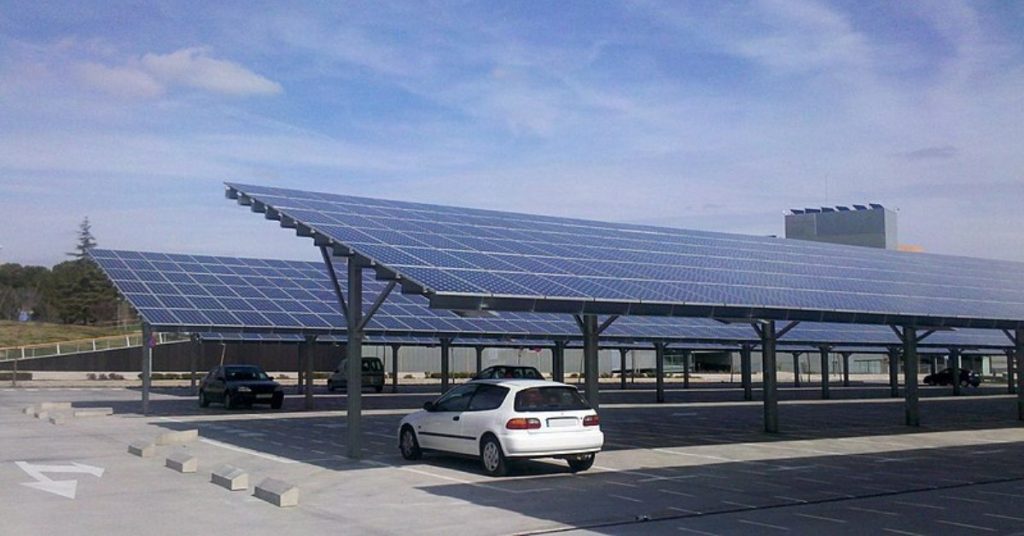More than 5% of developed land in the United States is dedicated to parking lots.
Large cities consume a lot of power, and transferring that power long distances is costly and inefficient. Building large-scale solar farms is often disruptive of local flora and fauna ecosystems. Less importantly, but still an issue, cars left baking in hot parking lots consume more gasoline or electricity to shed solar heat on startup.
If anyone were looking for a solution to all of these problems in one simple move, it would be smart to look at photovoltaic solar capture canopies for parking lots. America’s many parking lots are practically ideal for large scale solar installations. Not only would widespread adoption of solar be an incredible step toward the country’s goals of net-zero carbon generation, but often the retailers or businesses that own the land can make a logical financial case for building these sunlight-energy-capturing magic structures.
For instance, Target recently ran a pilot project in California using roof and parking lot solar to power its entire store, including HVAC systems. The system actually produces about 10% more energy than the store can consume, meaning Target can then send the energy back to the grid and receive payment for its power from the local energy company.
With that in mind, a study from Western University in Ontario—co-authored by Swaraj Sanjay Deshmukh, and Joshua M. Pearce—attempted to determine what would happen if Walmart covered all 3,571 of its U.S.-based Super locations’ parking lots with solar panels. The total nationwide capacity of Walmart’s theoretical solar power generation is 11.1 gigawatts. That’s about the same as twelve large coal-fired power plants, and enough electricity to provide power to 8.325 million homes.
National Renewable Energy Lab senior researcher Robert Margolis worked out in 2021 that if we dedicated some 15 million acres to solar electricity generation, not only could we generate enough power for the entire country’s needs, there would be enough excess to run every single mile we drive as a nation in electric vehicles. 15 million acres might sound like a lot, but consider for a moment that we currently dedicate more than double that, 31 million acres, to growing corn ethanol for bio fuels.
Okay, so 15 million acres of photovoltaic solar is a lot. Like, a lot, a lot. A project like this isn’t just going to spring up overnight. But if there is an economic case to be made for solar canopies, and there’s an ecological case to be made for solar canopies, and there’s a quality of life case to be made for solar canopies, then we should just make solar canopies. Besides, the more solar-backed micro-grids we create in this country, the less likely we are to have massive weather-induced blackouts. Or whatever they’re doing down in Texas.
Source: Jalopnik

